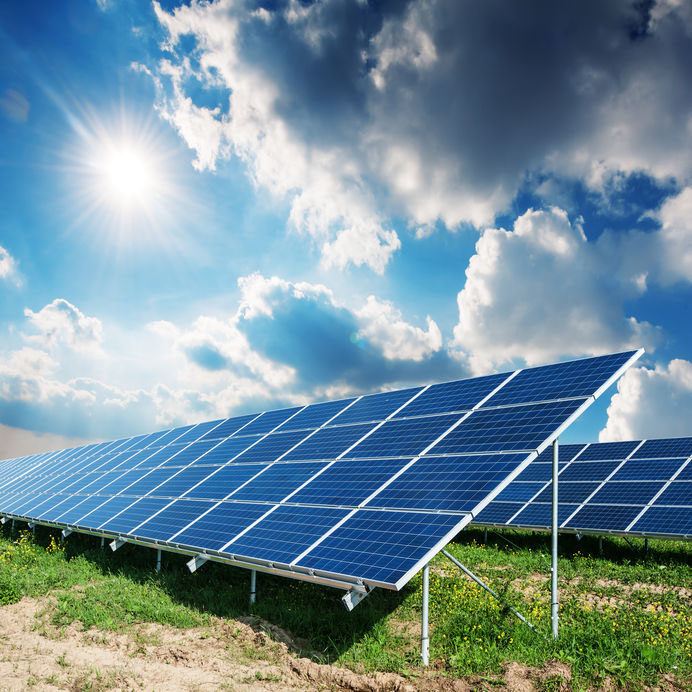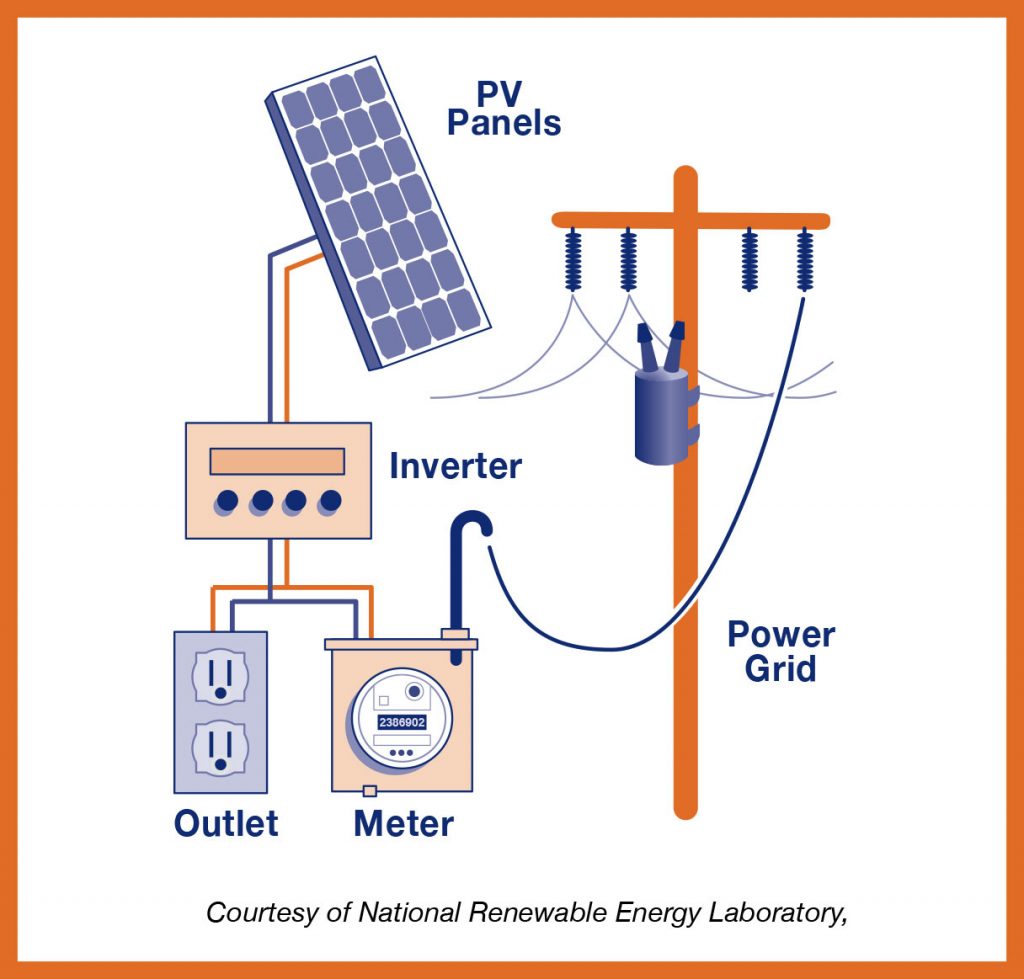
Solar panels may look simplistic in their design, but they are made up of complex technology that turns the sun’s rays into electricity.
How do they work?
Solar panels allow particles of light to remove electrons from atoms. This generates a flow of electricity. The panels themselves contain many smaller components called photovoltaic cells. The name means they convert sunlight into electricity. By linking many cells together, you create a solar panel.
The nuts and bolts
A photovoltaic cell sandwiches two sheets of semi-conducting material, often silicon. Each sheet has either a positive or negative charge. Manufacturers achieve this by adding phosphorous and boron to create an electric field.
When a photon of sunlight releases an electron, the electric field of the panel pushes the electron out. Conductive plates made of metal line the sides of the panel and collect the electrons. They then move to electrical lines where they can flow like other sources of electricity.
What’s the difference?
Whether part of a larger array, or attached to a roof, the generation process is the same. With larger arrays, the power is distributed to a larger group of customers. Panels attached to a home serve only the customer that lives there.

Laura King-Homan is the manager of Corporate Brand and Communication Operations, at Omaha Public Power District. She has nearly 20 years of print journalism and design experience, including the Omaha World-Herald.
View all posts by Laura King-Homan >








